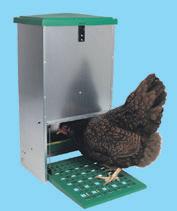














Spring Cup
September 20, Alexandra Park, Greenlane West, Epsom Hitching one’s wagon to the rising stars of standardbred racing could result in a flutter fast turning into a fortune. However, even if our horses don’t come home as we’d like, it’s all part of the excitement at Auckland’s home of harness racing. For details of the Spring Cup (Sep 20), and more upcoming racedays, see www.alexandrapark.co.nz.
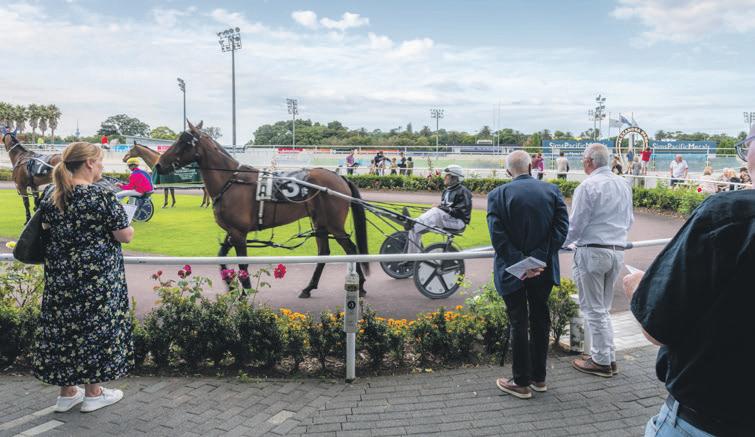

Handel Consort & Quire – Joshua

October 1, from 3pm, St Andrew’s, Queen St, Pukekohe
While the walls of St Andrew’s won’t come tumbling down, this choral performance is expected to raise the roof. One of Handel’s most stirring works, Joshua is a tale of biblical proportions. Visit www.pukekohe-anglican.org.nz or search ‘Handel Consort and Quire’ on Facebook for additional information.
Young Grower of the Year – national final
October 4-5, PIA Event Centre, 59 Ward Street, Pukekohe

Young Grower of the Year sees winners of regional contests (including Pukekohe’s Taylor Leabourn) tackle a range of primary sector challenges. Featuring a competition day (October 4) and awards evening, this event will again prove why New Zealand continues to lead the world in food production. Details at www.younggrower.co.nz.
School Holidays in the Square
October 6, 12-8pm, Town Square, King St, Pukekohe
Skate your way into spring thanks to the Pukekohe Business Association! With ice skating, a scavenger hunt, rides, music and more live entertainment all on o er, Pukekohe is set to celebrate the school holidays in fine style. Further details about this free, fun-filled, family event are available online at www.pukekohe.org.nz.

PLEASE NOTE: information regarding times & dates of these events was correct at the time this issue went to print. However, readers are advised to check events online for updates.
Austen Found
October 7, from 8pm, OSPA Hall, Hall Rd, Onewhero Austen has a problem. Many years after Jane Austen enjoyed fortune and fame, Penny Ashton has crashed her party! If comedy is the sincerest form of flattery, this musical would likely see the author of Pride and Prejudice (and many more) followed, flattered and in more than just half a state of enjoyment. For details see www.ospa.org.nz.

St James – Spring at All Souls
October 8 – November 5, from 7pm, All Souls Anglican Church, North Rd, Clevedon

Spring Jazz (Oct 8) sets the tune for a quartet of concerts. Unlimited Acappella, Magnolia Trio and an exploration of French music, A Stroll through the Sun King’s Garden at Versailles, complete an inspirational lineup. For further details visit www.clevedonanglicans.org.nz.

Roald Dahl’s The Twits
October 11-14, times vary, Due Drop Events Centre, 770
Great South Rd, Manukau
The wonderful wit of a maestro of child-friendly comedy, Roald Dahl, will (yet again) make for many a mirthful moment through this live adaptation of one of his most marvellous stories. See www.duedropeventscentre.org.nz for more information.

Tami Neilson’s Rock’n’Roll Revue
October 13, from 8pm, The Civic, Queen St, Auckland City
An acclaimed country music artist, Tami Neilson, is set to share the stage with 1960s’ mod music legend Dinah Lee. Combined, this pair of Kiwi music icons is expected to deliver a show proving that good music, country or pop, never goes out of style. Additional information is available via www.libertystage.com.













I’m not allowed to advise people how to vote on October 14, so I’m going to do it anyway. First, go to www.elections.nz to find a polling centre, go along and tick the boxes next to the names of the person and party you’d like to vote for. Is it okay to say that or do I have to check the phonebook-sized media guidelines?

Ahead of the general election, we have to endure the dumbed-down patter of ‘the orange man’ (I don’t mean our PM de jour!), but it’ll be over soon enough and, who knows, if we don’t vote in time, we might be o ered fast-food vouchers or sports tickets to, belatedly, perform our civic duty.
of the aims they have.
Ahead of the 2017 election, another stand-in PM opined that we shouldn’t cast votes based on personality – I’d agree if I didn’t have one either! Jokes aside (sorry, Bill!), we should ‘get personal’ with our electorate ballots, however. After all, what benefit is there in voting along party lines if we end up with someone representing our local interests who isn’t a fierce advocate for our local communities?
In addition, we shouldn’t get too clever. Anyone usually given to the blues who voted red to stop green in 2020 would likely see how strategic voting can backfire spectacularly.
to Micheline Newton over Auckland Botanic Garden’s gates. Speaking of the new season, we have some zingy spring recipes as well as our usual compliment of prizes, books and more from which to choose.

When
Recently, we opened fire with a salvo of questions for Pollok sport shooter, Michael Johnson, who won our vote regarding which interesting locals we’d like to chat with, as did Ardmore lifestyler, Helen Yan. To kick o spring, we also posed questions
With regards to choices, whether we ‘don’t change horses mid-stream’ or we think the ‘old nag ain’t what she used to be’, any vote is a vote for democracy. And, although his remark was not original, I agree with Winnie (no, not that one!) when he said: “Democracy is the worst form of government, except for all the others.”
Jon Rawlinson, editor




Rural Living is a FREE monthly lifestyle magazine delivered to RD 1,2,3 and 4 rural lifestyle properties in the greater Franklin district and beyond – Pokeno to Drury/Karaka and Clevedon to Waiuku. It is also available from businesses throughout the district's regional townships, including their key community of Pukekohe.
FRAMEWORK: The South Auckland Orchid Show is a top pick among many locals. Far from being ‘garden variety’, orchids deliver a diverse range of blossoms and an equally diverse range of enthusiasts. Never one to miss the chance to stop and smell the flowers, Rural Living’s Wayne Martin visited this annual show, as his photos (including this month’s cover image) reveal. See page 40 to view more stunning snaps.
Editor: Jon Rawlinson
DDI 09 271 8036 editor@ruralliving.co.nz
Sales: Kelly Cooke DDI 09 271 8026 kellyc@ruralliving.co.nz
Art Director: Clare McGillivray
DDI 09 271 8067 clare@ruralliving.co.nz
Design: Claire Robertson clairer@times.co.nz
Publisher: Brian Neben 151 King Street, Pukekohe, Auckland PO Box 38 232 Howick, Auckland 2145







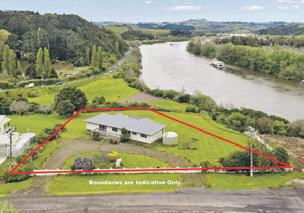






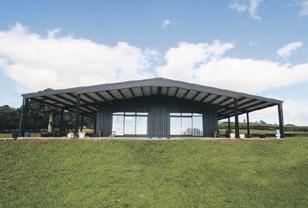





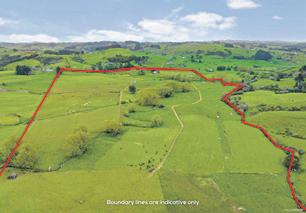






















An acclaimed ‘stringstress’, Amalia Hall, is set to bring the house down (with a little help from the Manukau Symphony Orchestra) on November 18. Showcasing the masterful works of Elgar and Brahms, this concert is expected to raise the roof at Due Drop Events Centre. We have double passes for THREE lucky readers.




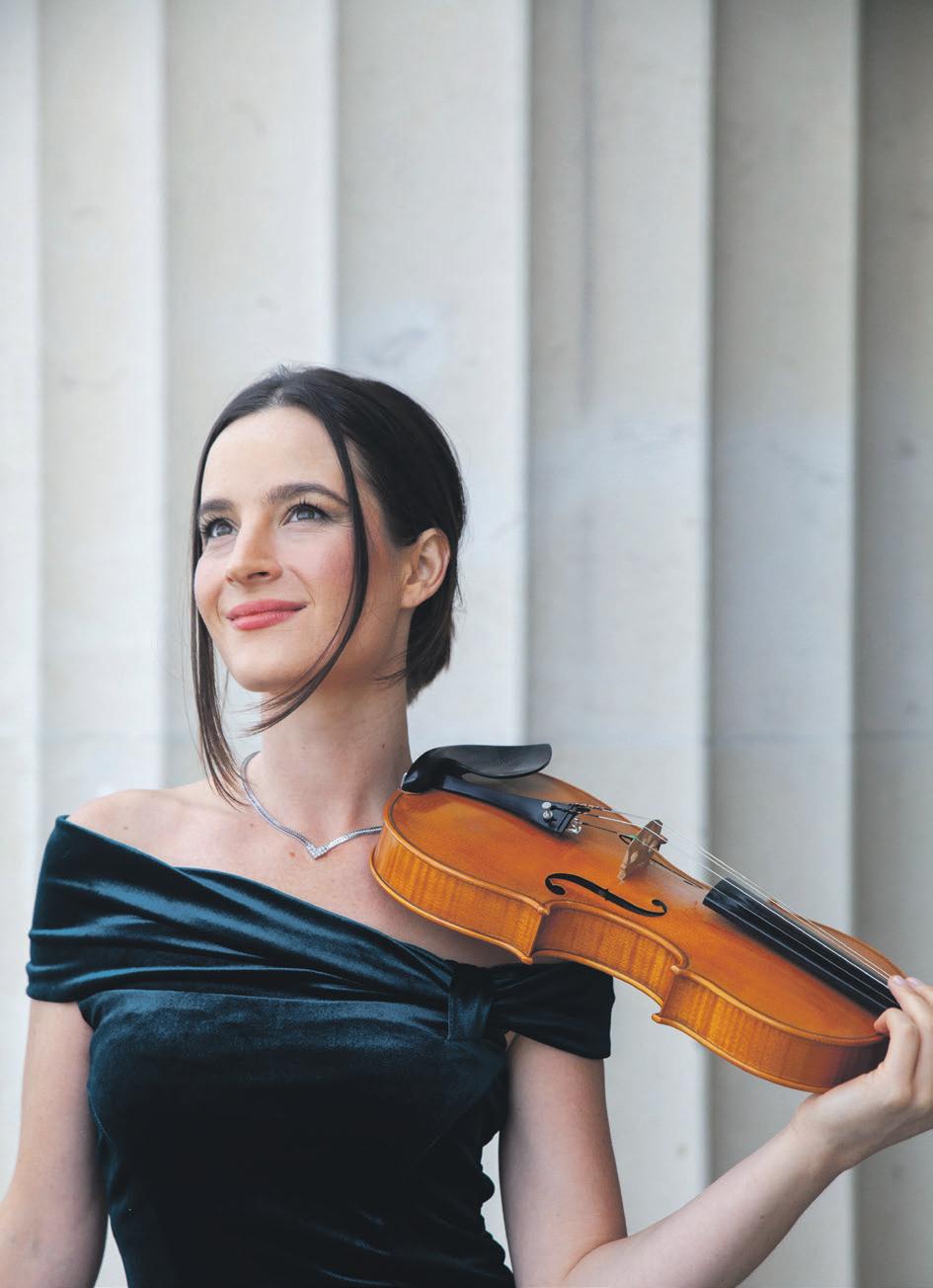
Acclaimed advertising creative, Mardo El-Noor, has gone to the dogs! In this latest book, the Auckland-based multimedia artist unleashes his talents through the print medium taking us on a walk on the (not quite so) wild side. Dogs with Stories presents lighthearted, ‘hyper realistic’ photos and stories proving why dogs really are ‘man’s best friend’. We have a copy of this book up for grabs.
Mardo El-Noor: Dogs with Stories | RRP $79.99 | Beatnik Publishing












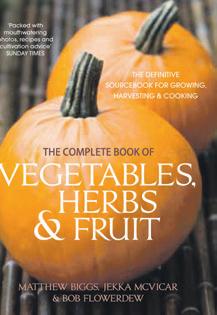




During a recent spring clean, we came across a few treasures we didn’t know we still had! As a result, we have a gardening book pack – they’re not new releases but all are in great condition – to give away. Featuring edibles and ornamentals, flowers, fruit veggies and herbs, this pack of top tomes is well suited to novice and seasoned gardeners alike.

As mentioned in our previous issue, the good folk at Magic Beans are keen to grow a network of gardeners (who then trade produce) across the country, including Franklin – for more information see www.magicbeansapp.com. To help set down a few more local roots, we have THREE seed packs (each featuring a range of seasonal seeds) to give away.






















Originally from England, Micheline Newton has now firmly set down roots at Auckland Botanic Gardens. A former nurse with a degree in tourism, the visitor services manager now devotes her time to nursing (in a way!) the garden’s plants while guiding its guests, as she explained to Rural Living… over the gate.


What makes Auckland Botanic Gardens a ‘must visit’? Why is it needed?

A visit to Auckland Botanic Gardens is ideal for wellbeing on a variety of levels. We layer information and vary activities so there’s something for everyone. Whether visiting for its aesthetic value or seeking advice on plants and gardening, we can ensure
people have a great experience. It’s also a great choice for a family day out while regular events provide even more reasons for people to come and see what makes it so special.
In general, botanic gardens not only play a huge role in health and wellbeing but also in conservation and research. For that reason, the work we do here is extremely important.
How much has changed since you began working at Auckland Botanic Gardens and is there more change to come?
I started here in 2005, following the opening of the Potter Children’s Garden and Huakaiwaka visitor centre. Prior to that, most visitors were avid gardeners aged over 65 and the plants were the sole focus – we

hadn’t been paying enough attention to the people. Since then, we’ve put in a lot of e ort to raise its profile as a family venue, so there are even more reasons to visit, including events such as Sculpture in the Gardens. Looking ahead, we are replacing two large glasshouses with a new one and we’re also hoping to add a new, co-designed Maori garden.
How involved is curator/ manager, Jack Hobbs, these days? How inspirational is he?
Jack is extremely hands-on and remains passionate about connecting people with plants and gardens. He has instilled the value of responding to research and understanding how to remain relevant to visitors, delivering purposeful outcomes for our community. With the financial support of [community group] Friends of the Gardens, he has encouraged us to attend conferences and explore gardens around the world to develop our skills and knowledge. You will still find him walking the gardens with his camera, capturing their beauty and sharing it with the team. His passion is infectious.
Did you have any garden experience prior to taking on your current role? How hands-on are you now? Do you have a garden at home?
I’ve always loved gardens and parks. My dad was an avid gardener and he turned one of our cider apple orchards into a vegetable garden. My brothers and I spent many years helping him maintain these. I love gardens, but my fingers were not as green as my dad’s.
These days, I don’t work in a gardening position. However, as I’m surrounded by expert gardeners, I can’t help but pick up tips and I even speak about plants using Latin plant names. Five years ago, I bought four acres of bare land near Te Kauwhata.
I’ve since planted around 5000 natives and I’m introducing exotics too. I certainly wouldn’t put my garden on public show, but I love it.
How beneficial has your nursing and tourism background been?
I developed so many transferable skills from nursing. The same principles apply: love, care, attention, with the right people/ plants, the right conditions and the right place all needed for both people and plants to thrive. We often say that we’re working in the ‘wellbeing industry’, which has been most apparent considering the challenges of the past few years.
Following my degree, I worked in the domestic tourism sector and loved getting to know what makes NZ special – its flora. This also gave me an appreciation for all that is required when creating a great visitor experience.
Hamilton Gardens is set to charge ‘out of towners’. Any plans to do likewise?
There are no plans to charge visitors at Auckland Botanic Gardens. There may be charges for some event activities but not for garden entry. Hamilton Gardens has a single-entry facility for their amazing themed gardens, so they can ringfence these areas for paid entry, but there will still be some free access for everyone.
Why was Sculpture in the Gardens postponed? Any other major events planned for this spring and summer?
Following the pandemic, two other large, outdoor sculpture exhibitions are now set to run during the same summer, 202324. Artists spend a lot of time and money creating their works, so having three shows on at the same time would have meant more competition for artworks, sponsorship and patronage.
Moving our exhibition to next summer was definitely the most sensible decision.
Our spring blossoms are always a great drawcard and the Friends of the Gardens will still hold an indoor sculpture exhibition, called Holding Ground, this summer. It will feature work by new artists and many who have been involved with Sculpture in the Gardens in the past. There will be guided walks to showcase our amazing permanent collection of outdoor works. Details for these and other events, including workshops, are on our website.
If you could grow any plant imaginable, what and why?
I am fascinated by a plant called Psychotria elata (Hot Lips). Found in Central and South America, it has evolved to attract pollinators such as hummingbirds and butterflies. You only see the bracts in the shape of lips for a short while before they open to reveal the flowers. I’m a Rolling Stones’ fan and the bracts remind me of Mick Jagger’s lips!
If you could be Prime Minister for a day, what would you do first and why?
I’d declare a public holiday to encourage everyone to enjoy New Zealand’s gardens due to the wellbeing and understanding of the value of plants they o er.
If you could invite any three people to dinner, who and why?
David Attenborough must be the first – what a life he’s led! His knowledge and stories would keep everyone fascinated and entertained. I’d also invite Paul McCartney – I would love to know more about the inspiration behind his music and he could lead a singsong around the piano after dinner. Finally, Oprah Winfrey – she has met so many people and would o er great stories and insights.
Helen Yan could be described as the bird lady of Ardmore, her menagerie encompassing a variety of poultry, geese and guinea fowl. However, as she told HELEN PERRY, her passion lies in breeding white Japanese quail.
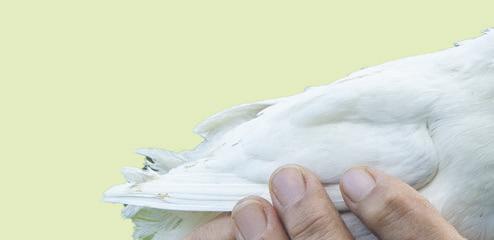
City slickers who swap their urban stamping ground for country living can find this new way of life challenging as was the case for Helen Yan and her husband, Stephen, when they bought their Ardmore home, on 8000 square metres, 14 years ago.
and surgeon, a career she hoped to pursue here.
professionals who advised us and helped us master many tasks.”

“We knew nothing about rural upkeep but were keen to learn. It began with the 20 or so shaver chickens we inherited from the previous owner,” Helen says. “Luckily, learning about their feed and healthcare went fairly well.”
and healthcare went fairly well.”
What didn’t progress quite so well was Stephen’s first lawn mowing attempt.
didn’t think cutting lawns, even






“We all grew up in the city but didn’t think cutting lawns, even these big paddocks, would be problem,” Helen recalls.





“However, when I looked out the window, I saw Stephen mowing with a wheel missing from the machine. It had come o and rolled down the section without him noticing. As we looked for it we laughed and laughed. Of course I had my moments too. The first time I tried to hit a nail I missed five times before I managed to hit it and, even then, not very well!”
Considering her skills lie elsewhere, this is understandable. Before immigrating to New Zealand from China some 30 years ago, Helen was an eye specialist




Zealand from China some 30 years
eventually took on other business
“I struggled to pass the English exam, which would allow me to practice in New Zealand, so I eventually took on other business interests – two local liquor stores and a dairy – but when we had a chance to buy this property, it


seemed ideal.”



































During this adaptation period, Helen started on her avian journey. This has resulted in her now owning a variety of poultry including brown shavers, white leghorns, silkies,





her now owning a variety of silkies, Barnevelders and
Undeterred by the minor
Undeterred by the minor problems they had encountered, Helen and Stephen embraced each new rural test, learning from
their mistakes.
“We had to learn what tools we needed and how to use them. We also had to learn how to maintain the land and the house, so we brought in
“We had to learn what tools we


Araucanas, which are the only hens to lay blue shelled eggs.
She also has guinea fowl and geese not to mention the wild ducks and other birdlife which fly in from time to time. But her main breeding e orts are focused on her 60 white Japanese quail.


Although quail are sought after by some New Zealand restaurants and, in the game season, wild California quail may be bagged by hunters, Helen says her birds are more like her babies.
“I breed them for pleasure and for eggs – the children love them. We boil the eggs then I peel and marinate them.”
Despite having an incubator, which can hold up to 200 eggs at a time, Helen is seldom overloaded. That’s because she is part of a group where members barter among themselves, swapping homegrown produce as well as
Helen explains.
“Because they can fly, they’re easily scared and small (making them vulnerable to predators) they need secure enclosures. They don’t like the cold or wet either, so I heat their pens in winter.”
Having honed her practical skills over the past 14 years, Helen also makes her own cages and carries out most chicken coop and fencing maintenance. She has learned to prune her large variety of fruit trees too, including macadamia nuts, chestnuts, persimmons, lemons, feijoas, apples and olives.



























Once thought to be a subspecies of the common quail, Japanese quail (also known as the coturnix quail) is now considered a separate species. Found mainly in Russia and East Asia – including India, Korea, Japan and China –most migrate south to parts of Southeast Asia in winter. However, they are now found in parts of Africa too.
Early records of domesticated Japanese quail populations date from 12th Century Japan although it is thought they may have been established even earlier. They were originally bred as songbirds but, by the early 1900s, Japanese breeders began to breed for increased egg production and the industry surrounding quail eggs was flourishing by 1940. However, the Second World War resulted in the complete loss of quail lines bred for their singing as well as almost all of those bred for egg production. After the war, remaining quail were used to rebuild the industry.
other goods. give 50 start



“I also lead a Chinese WeChat group and I’ve helped many people to establish their own bevy of quail. The birds are popular because they are small and easy to care for. I usually give 50 chicks to beginners keen to start out.”
During the day most of her birds run loose in the couple’s large, fenced yard but quail need to be contained, as




“For many years we also had a small herd of alpaca. They were so a ectionate and, before the fences were up, they even came into the house. Thankfully, they went outside to toilet!” she laughs. “When they finally became too much for us, especially the shearing, we let them go to an alpaca farm in Cambridge. Stephen was very upset; they were so friendly, often laying their heads on his shoulder.”
Despite having no more alpaca, rural life is still busy. Helen has sold her stores, but she says caring for her birds means she is too busy to take on another fulltime business. However, she has joined her daughter in a small venture making manuka honey and feijoa dessert wine with the aim of exporting their wares to China.
“Although we’re just starting out it’s an exciting enterprise to be part of – as long as it doesn’t take me away from my birds completely.”

The peak breeding season for Japanese quail is during summer. Incubation of eggs starts as soon as the last egg in the clutch is laid and lasts, on average, 16.5 days.
As they are easily managed, fast growing, small and they can produce eggs at a high rate, these birds have been farmed in large quantities across the globe. Providing developing countries with a source of meat and developed countries with an alternative to chicken, Japanese quails’ commercial value lies primarily in egg production as domesticated lines can lay up to 300 eggs each year.
Locals and others in the primary industries have been on a roll (and on the honour roll) recently, or looking ahead at contests/rewards to come, including:





Glenbrook kiwifruit growers, Brett and Fenella Wheeler, received belated congratulations from Auckland Council’s Rural Advisory Panel recently. Earlier in the year, the couple (who operate BFG Kiwi) claimed Auckland regional honours at the Ballance Farm Environment Awards for their sustainable practices.
A local posse rustled up a win in the Teams Challenge at the recent National Butchery Awards.
“A perfect score [took] this night to another level,” says Cowboys’ team captain, James Smith (aka The Tattooed Butcher). “Last year we didn’t finish our display and came second. This year, we came in with the intention of doing something that really wowed everyone. The display came out really well and we worked really well as a team.”
James and his deputies (Craig Haize and Charles Compston from Franklin Country Meats) broke down a whole lamb and a beef hindquarter in less than two hours to ride in their win at Auckland’s Evenfinda Stadium.
In addition, Luka Young (Kaitaia) was named Young Butcher of the Year with Motueka’s Morgan Moore claiming top honours in the apprentice category. For a complete roll of honour see www.rmnz.co.nz.

The Fencing Contractors Association (FCANZ) raised cheers for Van Beers recently. Hawkes Bay fencing legend, Paul Van Beers, became FCANZ’s inaugural Legacy Award winner recently, with Taylor Barr (Kimbolton) topping the Emerging Talent tables and Dunedin’s Michael Conijn named Trainee of the Year. Details at www.fcanz.org.nz.
A versatile approach saw Hopefield Hemp’s hopes of winning the Innovation prize at the Arable Awards satisfied. Meantime, an Auld favourite (Auld Farm Distillery) claimed the Food Champion Award. For details visit www.arableawards.co.nz.
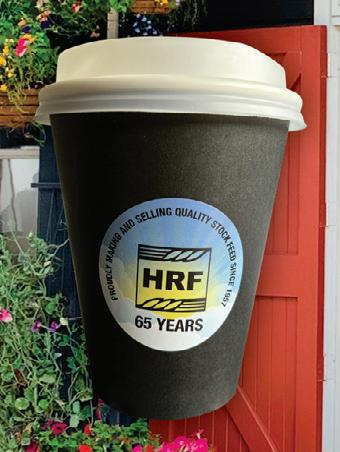




















Horses are common in Franklin but, as Dr Kara Watson DVM explains, they are plagued by an all too common and most insidious disease.

Viral respiratory disease is the most common cause of coughs, colds and poor performance in horses in New Zealand, but the most common cause of such viral infections is Equine Herpes Virus (EHV). ere are actually multiple strains of this virus, but the ones mostly o en seen in New Zealand are EHV 1 and 4. While both EHV 1 and 4 cause upper respiratory disease, EHV 1 can also result in abortion and, in rare cases, neurologic symptoms.
EHV commonly infects young horses with immature immune systems. Symptoms include an elevated temperature, nasal discharge (o en a clear, mild discharge from the eyes), coughing, loss of appetite, poor performance and, sometimes, sores inside the horse’s nose. is virus is frustrating because, if it stays around for a while, we o en see the development of a secondary bacterial infection, and it can establish dormant infections. Once it is dormant it is dicult to diagnose until the horse goes through a period of stress when the virus will return and appear to be a reinfection.

Unfortunately, there is no simple cure for EHV, however, symptoms can be treated. Reducing stress, addressing symptoms with supportive care, helping to boost immune systems and trying to avoid reinfection are all important parts of this treatment process. If the virus lingers and a bacterial infection forms, antibiotics will be needed.

EHV is spread through the air and nasal secretions as well as by horse-to-horse contact. Horses can also become infected by contact with objects contaminated by an infected horse, such as feed buckets, water troughs, brushes and even their owners. e virus can survive in the environment for up to seven days.
e best way to stop EHV becoming a problem is to vaccinate. Vaccination is best started in foals as it will help check early infections and it prevents the virus becoming dormant in the horse then reemerging during times of stress. Vaccinating
Delay shearing sheep until lambs are at least six weeks old



Wean bottle-reared lambs at a minimum of six weeks to avoid bloat becoming an increasing risk. To wean this young, they need to be grazing consistently for the past two weeks, eating lamb meal, chewing their cud, and they must be fully vaccinated. Take care managing feed volumes and frequency during weaning for bottle-reared lambs as it is a dangerous time for them –see www.franklinvets.co.nz for further information
Debud calves when they are 4-6 weeks old. Begin vaccinations at the same time and castrate while they’re sedated to keep discomfort to a minimum
Drench lambs, calves and kids for the first time when they are taking in a significant amount of grass. For handreared young, this will be when they are around 8-10 weeks old, or at weaning (around three months of age) for those reared on mum. Use a combination oral drench
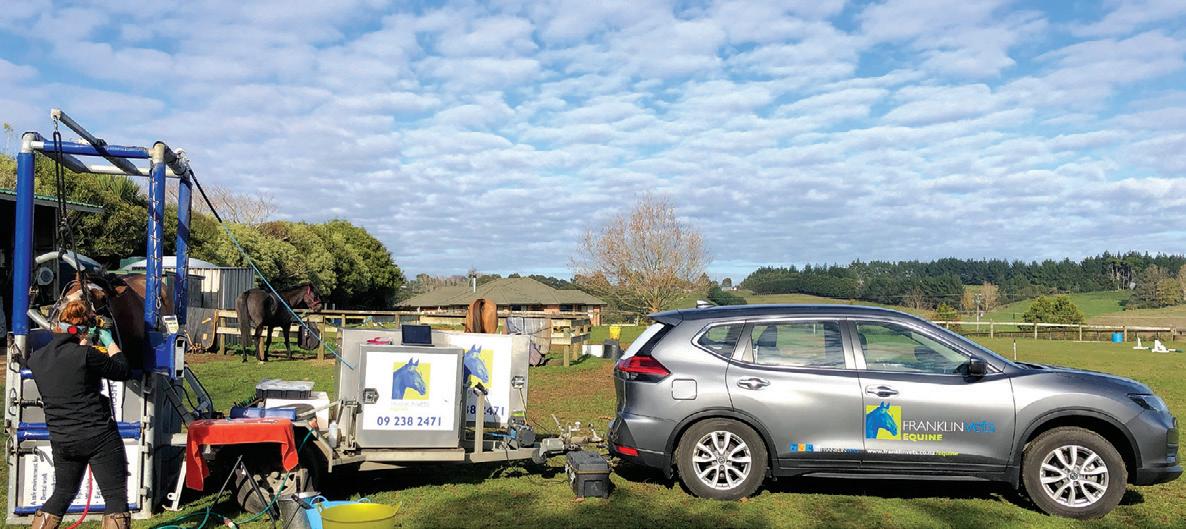
For














One of many local schools hosting calf club and agricultural style events, Mauku School held its Country Life Day recently. Students were riding high (as pictured) and presenting animals they had reared as part of the wider festivities. More photos via www.ruralliving.co.nz.
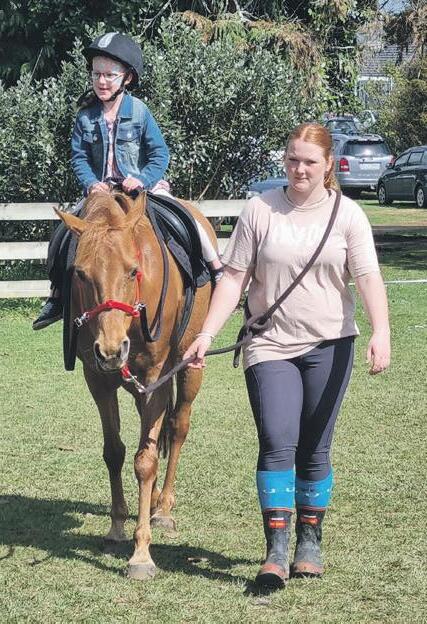
While proposals for a wind farm in Waiuku have seen some blow their tops (see below for more) the switch was flipped on another alternative energy project recently. O cially opened as this issue was heading to our printers, the new Waiuku Solar Farm is now beginning to see the light.
“Our solar farms produce clean energy and o set electricity produced using fossil fuels, contributing to New Zealand’s goal to become carbon neutral,” says Matt Shanks from developers, Lightyears Solar. “While some of the power produced will make its way back to the national grid, we expect much of the electricity to be consumed by [locals], improving the renewable proportion of the local power supply.”
Featuring approximately 3700 panels across three-hectares of a larger livestock farm, the solar

operation is expected to produce enough power for 500 homes. We intend to shed more light on this development an upcoming issue. In the meantime, details are available at www.lightyearssolar.co.nz.
Although the bright side of the new solar plant is becoming clearer, a much larger local energy project may cause an ill wind to blow in


Waiuku. Planned to cover 560 hectares, a proposed wind farm would bring power to the people but at what cost? Fortunately, the answers are still ‘blowin’ in the wind’ as plans are yet to be finalised and, even then, public consultation will be required. For further information search ‘Waiuku wind farm’ at www.environment.govt.nz.

MONOBLOCK
MONOBLOCK
“All-in-One Solu on”
“All-in-One Solu on”
AS/NZS 1547:2012
AS/NZS 1547:2012

BIOROCK (NZ) Limited P. O. Box 46 234, Auckland 1147
Sales: Dhivesh Krishna
Sales: Dhivesh Krishna
Email: dhivesh@biorock.co.nz Phone: 0800 462 246
Email: dhivesh@biorock.co.nz Phone: 0800 462 246
WWW.BIOROCK.CO.NZ
WWW.BIOROCK.CO.NZ



Whether recent Labour Party plans will prove mere quacks from a lame duck or a red rag to a blue bull for the primary industries, all will become clear from October 14. Ahead of the general election, we’ve included a brief overview of intentions from the two parties most likely to lead the next government. For a broader understanding of policies, readers are encouraged to visit minor parties’ websites as well as www.labour.org.nz and www.national.org.nz.
It’s been a hard row to hoe for the Labour-led government. Since 2017, the party has implemented (or planned) a raft of initiatives impacting the primary sector. Encouraging sustainability to strengthen ‘the backbone of our economy’ has been the driving force behind many of these, our Minister of Agriculture, Damien O’Connor, contends.


“Future export growth for our food

and fibre products will depend on demonstrating their sustainability credentials,” he says. “Government required or not, our agriculture sector will have to adapt over the coming years and reduce emissions. It’s a fact of business in the 21st Century, but with the support of government we can make that transition in a pragmatic way with the sector.”
Perhaps the most important legislation a ecting farmers and growers, changes to the RMA (Resource Management Act) and the Three Waters reforms, have already passed their initial stages.



Among Labour’s future goals is the removal of GST on fresh fruit and vegetables. Intended to ease pressure
• Our farmers are world-leaders. We will veto any new taxes on farming, we will repeal the Climate Change Response Act 2002, and we will stop carbon credits for forestry to protect food-producing land.
• We will ensure more frontline police, community safety is paramount.
• We believe in education, not indoctrination – let’s get back to basics.
• We oppose co-governance and race-based policies.

• We will restore New Zealand’s sovereignty.




• We will repeal the Therapeutics Products Act. Find out more: www.democracynz.org/policy











on consumers, this should increase demand for local produce, benefiting the primary sector.
In addition, fresh plans to invest in agritech are on the party’s agenda.
“Our ambition is to grow the agritech sector,” Prime Minister, Chris Hipkins recently confirmed. “Labour will inject $100 million into the Venture Capital Fund to support this objective.”



The National Party plans to ‘get Wellington out of farming’ through policies including its ‘Getting Back to Farming’ package.
“The primary sector contributes more than three quarters of New Zealand’s goods exports and underpins the standard of living of every New Zealander,” National’s agriculture spokesperson, Todd McClay, says. “However, farmers and growers are immensely frustrated by overbearing regulation. National will cut the red tape preventing growers [from] planting more fruit and vegetables, adding to the cost of living.”


The party’s ‘Local Water Done Well’ plans would see the government’s Three Waters legislation and changes to the Resource Management Act (RMA) repealed and replaced.

“New Zealand has abundant freshwater, but we capture and store less than 10 per cent. Current rules make it all but impossible to build new water storage. Consents can often take years and cost millions of dollars. Farmers are left with unreliable access to water,” Mr McClay adds. “National will make it easier to build water infrastructure by eliminating resource consents for water storage on land.”
National’s Primary Sector Growth Plan is expected to revitalise grassroots industry, the party’s leader, Christopher Luxon, contends.
“National’s goal is a growing primary sector that protects the environment and is subject only to smart and useful regulations, not burdensome compliance costs,” he says.
“New Zealand needs a strong primary sector and that is what National will support, as part of our plan to rebuild the economy.”
Damien O’Connor

Years ago, Rural Living began running a regular column intended to sum up the Minister of Agriculture’s position on the matters a ecting the primary sector. As we head into the next election, we’re taking a break from our ‘regularly scheduled programme’, currently focused on Damien O’Connor. However the election pans out, we intend to cover this important rural o ce again from our NovDec issue on.

Native species could enjoy more creature comforts should Critter Solutions Kill Traps live up to expectations. Billed as the “holy grail for pest eradication”, these fully automated traps only trigger when a pest species is identified, Dr Helen Blackie from environmental consultancy, Bo a Miskell, explains.
“These traps e ectively ‘think for themselves’ [and] they are extremely fast at triggering when an animal is recognised, within a fraction of a second,” she says. “Using AI to trigger traps means design can be far more open, as we’re not trying to stop other
Possums, rats and stoats: your days could be numbered! With less than 10,000 days remaining for Predator Free 2050 to achieve its target, these pests will be eradicated before too long, Rob Forlong expects.
“There is no silver bullet, it will take a suite of new technologies, leading research and science, along with social and community engagement. But, given how far we have come in such a small amount of time, I believe we will get there,” he says.
For details, and to see how we can play our part in protecting native species through this initiative, visit www.pf2050.co.nz.
species from entering. This makes the trap far more appealing for pests.”
Using little power while being selfresetting and self-luring, the traps are designed to be left in the field for long periods without servicing, reducing costs. They have passed requirements through field trials focused on dealing with rats, stoats and possums. In addition, they can help collect data about native species.
Backed by funding through Predator Free 2050 and the government’s Jobs for Nature initiative, Critter Solutions is already receiving orders for their traps from abroad.

Despite years of e ort and coming at great cost (financially and in terms of cattle) the Mycoplasma bovis (M.bovis) eradication plans appear close to fruition.
“All our evidence indicates we are in the tail end of the outbreak, meaning we are focused on building evidence that M.bovis is not present, rather than tracing risk events associated with active infection,” says Kelvan Smith from the M.bovis governance group. “With no active confirmed infection in New Zealand we have made good progress, but it hasn’t been easy getting here.”
According to the Ministry for Primary Industries (MPI), since the


Bird of the Year is again expected to give one species something to crow about, but another may rise, phoenix-like, to become the first ever Bird of the Century. Five of the 75 finalists in this Forest & Bird poll are extinct species.
“To celebrate our 100th birthday, we’re searching for the bird that has captured hearts over the last century,” says Nicola Toki from Forest & Bird. “Over the years, a simple poll has grown to become a national institution and beloved celebration of Aotearoa’s native birds.”

Intended to raise awareness about the plight of endangered species, and to encourage pest control e orts, the polls are open from October 30 and run until November 12. See www.birdoftheyear.org.nz for more information.
outbreak began in 2017, almost 200,000 animals have been culled with eradication costs exceeding $650 million. However, MPI contends the long-term costs of ‘living with M.bovis’ would have been much higher.
As the programme enters a new phase, submissions from farmers are being sought up until September 25. For more details, search ‘M.bovis’ at www.mpi.govt.nz.


Gidday, folks. Isn’t it fantastic to, finally, see some sun? If the number of calls we’ve received about pest bird is anything to go by, the wildlife is just as keen as we are to see a decent spring.
Sparrows, starlings, mynas, pigeons and doves often move into buildings and other structures for the nesting season and plenty of people are already starting to see nesting material being dragged in under rooves and stashed among their rafters. This process gets messy quickly and it can be horrendously noisy. Damage to light fittings and heat pump or ventilation ducting is also fairly common as birds peck through vents and foil to get to a new nest sites. Add disease risks from wild birds around stock feed and it’s not hard to see why pest bird control is essential.
Regardless of the species, the issues are pretty much the same, involving access and usable nesting areas. Many buildings favoured by birds are completely open by design, or
have their doors open all day every day. However, if access is only being gained through small holes, such as gaps around beams, then blocking these with chook mesh is a great start. If birds are getting in under a roof, behind guttering, you may consider fixing a leaf guard type of product along the top. This is a fairly big fix, but these products can completely eliminate some serious problems.
Sadly, many other situations don’t allow for an easy fix and completely stopping access is not always possible. Ledges, lightshades and tops of exposed beams are all common places for nests and it’s incredible just how many birds will make use of just a few metres of space. Making these areas unusable is well worthwhile –try covering exposed gaps between beams with mesh or timber removing access to any flat areas, for example.
Often enough, the areas to be treated are simply too vast or too high for deterrent products to be applied, in which case Pesto Bird Paste (its active ingredient is Alphachloralose) is a good option. Applied to bread or grain, it causes birds to become drowsy

and fall unconscious – unintentional victims can often be safely revived in a box in a hot water cupboard. If applied correctly, the level of control achieved in a short time can be impressive. O the shelf, premixed Alphachloralose peas and wheat also work well.
The trick to using Pesto and similar products is to establish a solid feeding regime over a few days prior to poisoning. Crucially, this means birds become accustomed to the prefeed and observing their feeding can provide valuable insights into how successful control measures will be. Always follow manufacturers’ instructions for safe and e cient use and see www.pesto .co.nz for details about the Pesto range.
Shooting is seldom the most e cient tool for pest bird issues around buildings, but it’s particularly e ective for removing roosting pigeons from large structures and phoenix palms. By shooting at night, very quietly with an air rifle, I can remove an entire group in just one visit, which is always very satisfying!
For advice dealing with specific pest bird issues, feel free to give us a tinkle.











II can’t believe I am sitting down now to write my column as it seems like it was only a couple of weeks ago that I wrote the last one! However, it is a positive sign as it means we have yet another issue on its way to inform and entertain our readers.


What a month it’s been with Father’s Day and so much sport to be watched. As ours is a rugby household, we have been rather sad about a couple of recent All Black results. We celebrated Father’s Day the week before the actual day – it suited some family to come to Auckland then instead. This meant we all enjoyed watching the Warriors secure a win in the NRL on the Friday night.
All was happy in the household as
we headed to bed preparing for an early breakfast followed by another big game. We all fell quiet about ten minutes into the game as the Springboks treated our players to a sound beating. It wasn’t the best way to kick o our Father’s Day plans but we still enjoyed a special family dinner, which was superb, and forgot (somewhat!) about the rugby.
I have written about my grandson, Jamie, before – he is a chef on a super yacht. We are never quite sure when he is going to fly in, so we were delighted when we heard he was planning a visit. Jamie has an amazing life, working three months on and three months o , spending his free time touring all sorts of places that his yacht doesn’t visit. He spends summer in the Mediterranean and winter in the Bahamas, or wherever else the owner wants to go. It seems an unreal lifestyle to us down here in NZ.
Jamie and other family members
who didn’t attend our early Father’s Day weekend came to stay on the Friday ahead of the opening game of the Rugby World Cup, which had the All Blacks playing France. Once again, we had a full house with all bedrooms filled and, once again, we were up for an early breakfast followed by the big game. Groundhog Day comes to mind! One grandson left before half time to go into the city and another day of gloom descended. But it wasn’t quite the same as our earlier sporting weekend – the Warriors lost too! However, Jamie (the chef) went food shopping and made us a meal that was simply amazing, cooking so much that we had deluxe leftovers to last another couple of days.
Looking ahead, with no more big family get-togethers to coincide with sport, we’ll miss out on fabulous dinners but we are hoping our ‘cups’ will still run over, rather than having the opposition running over us!




For some sportspeople going ‘great guns’ is important; for Michael Johnson, it’s essential. JON RAWLINSON was pleased to put his hand(s) up recently, o ering to chat to this dedicated sportsman.
Missing the mark is never ideal but we’re more likely to regret the shots never taken. Pollok sport shooter, Michael (Mike) Johnson, is never deterred from taking his shots, as his impressive record proves. Tuning out the hubbub of competition, the noise and even the media (more on that in a moment!) the biggest obstacle Mike needs to overcome is… himself.
“The hardest thing in this sport is battling your own mind. You have to be confident in your own abilities and not let any negative stu impede on your performances. It’s essential to have the right mindset,” he says. “The logistics, the flights, everything else involved with is [harder], and having a disability is challenging enough, so shooting is the easy bit, the fun part.”
Mike became a Member of the NZ Order of Merit (MNZM) last year and has a slew of records to his name. He’s bagged many a medal over the last (almost) decade, including Paralympic gold (2004) and bronze (2008 and 2012) as well as two gold, a silver and two bronze World Championship medals. It’s intended as a (somewhat) loaded question when I ask how many World Cup medals he has. Mike
returns fire with typical and impeccable precision: “Lots!” he laughs.
All going well, Mike plans to add to his laurels at the World Champs in Lima, Peru – he competes not long after this issue hits the streets in R4 10 metre mixed Air Rifle (standing), R5 10m mixed Air Rifle (prone) and R9 50m Mixed Rifle (prone) events.

“The training has been going great, I’ve been building up and getting better, so I have a good chance in Lima. There’s always a chance [of three medals], but my air rifle events are my strongest at this stage. I don’t have a 50-metre range, but one of my coaches sets one up on his farm in Ngaruawahia where I can train with the .22.”
His primary aim for Peru is to ensure he books his ticket to the 2024 Paralympic Games.
“I’m working towards Paris, which will be my sixth Paralympics. I feel a little bit under pressure because I haven’t won my quota yet,” he explains.
“World Champs and World Cups are, mostly, opportunities to win a quota, which is a bit like a ticket. I feel I need to win a medal in Lima to secure my quota; after that, my next opportunity would be the World Cup in New Delhi (March).”
Success in Paris will be even sweeter for Mike following the 2020 Paralympics, held in 2021 due to the pandemic. Ironically, he wasn’t too hot under the collar about missing out in Tokyo.
“Because of [the pandemic] I didn’t have any international competition for about two years or so, which definitely did a ect me. It wasn’t the same for everyone – everything opened up [earlier] for the Europeans so that meant they were competing again sooner,” he says.
“Someone interviewed me while I was busting my guts trying to get to the finals to set up. It wasn’t the questions that bothered me, just being stuck out in the hot sun. Because of my disability I overheat and it takes a long time to get my body temperature back down.”
Does that means he is ‘blaming



the media’, he laughs.

“I hate to use excuses, but yeah, I don’t remember his name, but why not? Yeah, I’ll blame that guy!”























Since he won gold at his first Paralympics (Athens 2004), Mike’s competition has sharpened its game with more top shooters involved.
“It is getting tougher – I’m now shooting against maybe 50 or 60 athletes in one event, so the depth of field has grown. It’s not that I’ve dropped my level, it’s that others have brought theirs up, which is great for the sport.”
Sport involves triumph and tragedy – Mike is familiar with overcoming the latter more so than many. Losing the use of his legs as a result of a car accident on the notorious Glenbrook Road almost 30 years ago set him on course to becoming a renowned athlete. And yet, despite his success, Mike receives a typically Kiwi understated reaction at home in Franklin.


“When overseas, in a [competitive] environment, it’s very di erent, but locally it’s almost like nobody knows who I am – to them, I’m just some guy in a wheelchair. Sometimes I’ll have a tradesperson over who’ll say ‘oh, you’re that shooter guy,’ but that’s about it.”


He may retire from competition after the Paris Paralympics but Mike won’t be bidding a farewell to arms entirely.

“It all depends on the results. If I win a medal, I might think ‘woohoo, let’s keep going!’” he adds. “I lead the NZ Shooting Para Sport programme and I also coach, so I’ll always continue to be involved in the sport. But [after retirement], I’ll spend more time helping other athletes.”
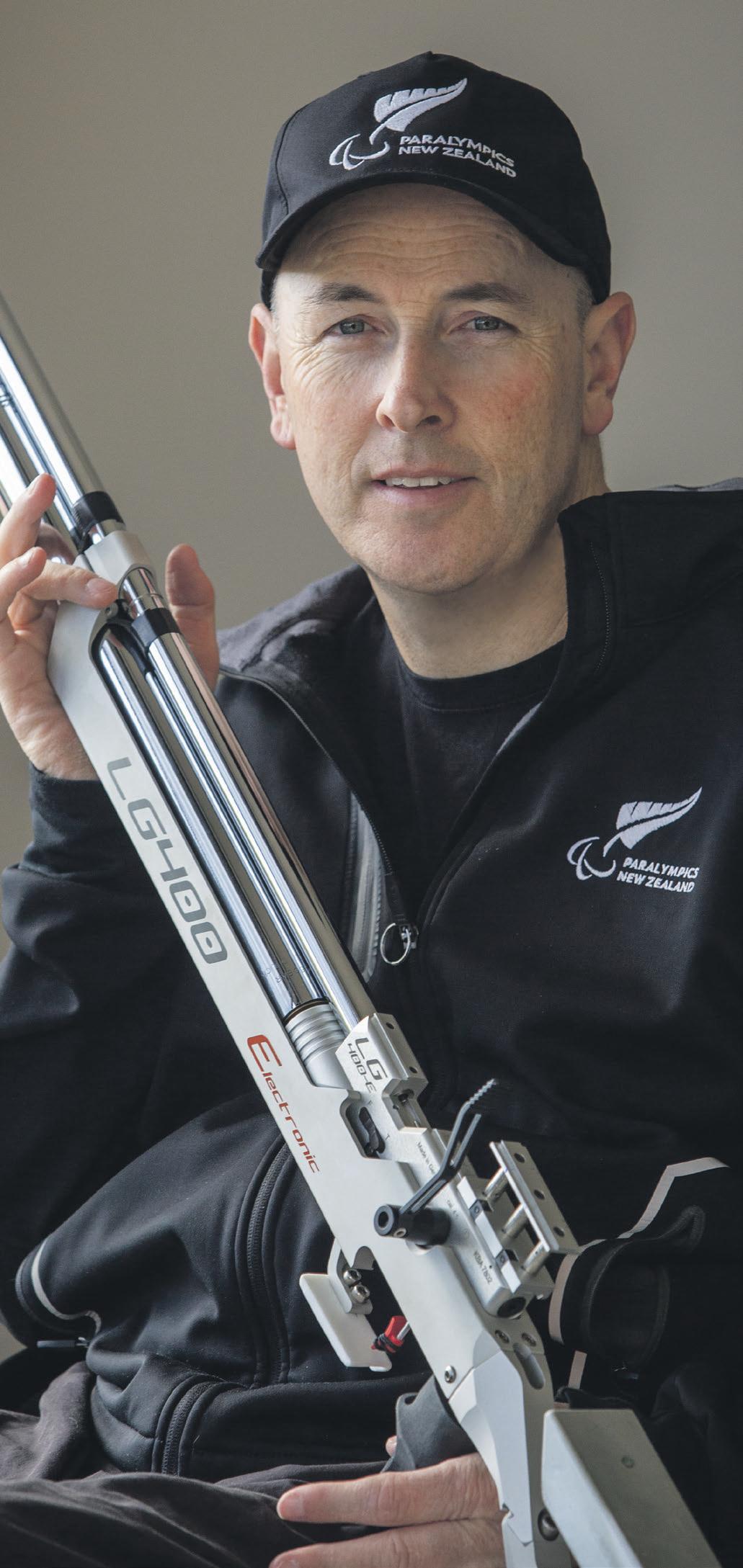
Spring is in the air with much on the agenda, Tracy Shackleton confirms.




WELCOME TO SPRING!
It’s nice to see the flowers in our bike planters starting to burst into bloom around the town. The beautification of the town (including the planters and bikes) is an initiative by the Papakura Business Association to make the area more attractive for our community. It also compliments the murals on many walls around Papakura and the beautifully painted Chorus telecommunications boxes throughout the area as well. Thanks to these, Papakura certainly is looking colourful!

GENERAL ELECTION: On October 14, New Zealand will go to the polls to choose our next government and, maybe, a new MP for Papakura. To ensure you’re on an electoral roll and for further information about all of the candidates standing in our constituency visit www.elections.nz and www.vote.nz.
WELCOME: We’re awaiting the arrival of Starbucks to Broadway, which will open soon. We’re also welcoming 2nd Time Around, providing preloved clothing in O’Shannessey Street, which boosts our great selection of op’ shops and preloved clothing businesses in Papakura.
LOCAL AMENITIES: We are so lucky to have a wonderful selection of community amenities in our town including Papakura’s art gallery, museum and library as well as Massey Park Pools, Papakura Leisure Centre, Hawkins Theatre and O Broadway Theatre. And, we have amazing walkways, a fantastic skate park with both Central Park and the Village Green featuring outstanding playgrounds.
Papakura Business Association









56A Broadway, Papakura
Papakura 2244, Auckland
Phone 0220997331




www.papakura.co.nz

A fire ripped through upstairs premises at Pukekohe’s The Monarch on September 15. A firefighter confirmed emergency services were at the scene on King Street by, approximately, 6.30am. As this issue of Rural Living was being published, no injuries had been reported and the cause of the fire was yet to be confirmed. Damage appears extensive but limited to the upstairs interior. Our hearts go out to The Monarch’s team and we hope this popular restaurant will up and running again soon.



Do sitting MPs Andrew Bayly (Port Waikato) and Judith Collins (Papakura) deserve a tick or are locals ticked o with their antics during their last parliamentary term?

Could Gwendoline Keel and Anahila Kanongata’a unseat them or will a dark horse candidate from New Zealand’s minor parties cause an upset or two? Can Nanaia Mahuta hold on to her Hauraki/Waikato (Maori) seat? The upcoming general election (October 14) will see all these important questions answered.
While most Rural Living readers will vote in the Port Waikato, Papakura or Hauraki/Waikato electorates, some may be cast ballots for the Coromandel or Waikato electorates. In all cases, it’s essential we do our homework.

For details regarding all of the local electorate candidates visit www.vote.nz.

















When buying or selling property (rural, lifestyle or residential), it pays to consult a local expert, such as these dapper chaps.

As showcased in our previous issue, women are making their mark on the local real estate market. However, a good man isn’t hard to find in Franklin. Be it an ever-so-humble home in town, a sprawling lifestyle spread in the country or even a working farm or growing operation, our properties are in safe hands with the assistance of experts such as those featured on these pages. Through local knowledge, experience and a commitment to achieving optimum results on our behalf, these men mean business!
AREINZ, Harcourts Pukekohe




Ph: 0274 982 542 | E: dan.hewes@harcourts.co.nz
Century 21, Papakura
Ph: 027 604 0504 or (09) 296 2829







E: gary.bal@century21.co.nz





















Gary Bal is intent on defining a new era of real estate. An awardwinning agent with a driven commitment to achieving excellence sees him as one of the most desired property advisers in Auckland. Across all touchpoints (client, process, and team) he’s elevating expectations of service and the dedication to deliver, helping make one of life’s great stresses anything but. Gary’s character, negotiation skills and refined attitude take him to the next level — named in Century 21’s global top two per cent and ranked top across the entire group in just his first year as a principal.






Bayleys, Pukekohe
E: paul.voorburg@bayleys.co.nz | Ph: 021 029 05733


under his belt, Dan has the





















Rural life runs deep in Dan Hewes’ bones, having spent his first 10 years on a dairy farm on the slopes of Mount Taranaki before his family moved to Pukekohe. He thoroughly enjoyed his childhood, largely in the great outdoors. Today, with a career in real estate spanning 32 years under his belt, Dan has the experience and solutions to ensure clients achieve their goals and dreams. When not out and about selling your lifestyle properties, he is at home in Ramarama working on his own lifestyle paradise, with a little help from his best friend Ruby!
A former teacher, qualified mechanic, business owner, property trader and real estate agent, Paul Voorburg has turned his hand to numerous enterprises and vocations. He has an infectious personality, hunger to learn and ability to adapt to succeed in every undertaking. His a nity for real estate harks back to the 1980s, when he began buying, selling and developing properties. He loves renovating and landscaping homes, able to recognise and uncover properties’ true potential. Assisting buyers and sellers across the market, Paul has a particular connection to the rural sector, spending the past 37 years living on farms and lifestyle properties. Looking for a real estate expert with a broad skillset and an ability to connect with people? Better call Paul!

Managing Director – One Agency Counties Realty





M: 021 753 096 | E: iancroft@oneagency.net.nz





























PGG Wrightson Real Estate

M: 027 336 8709



E: kane.needham@pggwrightson.co.nz
17.
Ian Croft is no ordinary estate agent. After graduating from ‘the university of hard knocks’ he spent 45 years in international trading, working in real estate for the past 17. He draws on expert knowledge of local farming and horticulture as well as subdivision sales and selling o plan. A high achiever in one of the country’s biggest real estate companies, Ian won numerous awards. Now, he has assembled a first-rate team to help vendors through tough decisions, tackling even the most di cult deals. While his suit remains at the drycleaners, Ian is always prepared to don his gumboots and wade into any challenge.
LJ Hooker Pukekohe & Karaka
M: 021 315 116 | E: dturner.karaka@ljhooker.co.nz
Dylan Turner is not only a successful, award-winning real estate franchise owner (with three o ces including two in the Franklin region), he’s also a thrill-seeking race car driver. He sets his lucky, contract signing pen down occasionally, whenever he puts his pedal to the metal in his rally car. This makes Dylan the fastest real estate agent in Franklin as well as one of the most respected names in the real estate industry. The competition that drives Dylan, both in the rally car and in sales, makes him a cut above the rest.

Kane Needham is a trusted partner in rural and lifestyle real estate, bringing a wealth of knowledge and a passion for the countryside to every transaction. With more than a decade of experience in the rural industry (as a livestock agent, auctioneer and, now, a real estate sales consultant), Kane has forged strong connections with farmers, landowners and investors across the region. His understanding of the unique challenges and opportunities in the rural market is superb. As testimonials show, his reputation is built on trust, honesty and integrity. ‘Kane’s transparent communication and dedication throughout the process ensured we got the best value for our property,’ writes J&R Hamilton write. ‘If you’re considering buying or selling property, I wholeheartedly recommend Kane.”

Barfoot & Thompson Pukekohe
M: 027 238 6660 | E: b.moore@barfoot.co.nz
Since joining Barfoot & Thompson in 2015, Brendon Moore and his wife Louise have been ranked in the Top 5 Sales Partnerships/Teams each year. Brendon is a successful, hardworking, ‘roll up his sleeves’ guy, conducting business in a professional yet relaxed manner. Complementing his business skills are Brendon’s perseverance to see a job through to its completion, determination to deliver on his promises and a steadfast belief in doing any job right the first time. Beyond real estate, Brendon is either on the rugby field, fishing or playing golf. Through years of experience he has refined his skills, staying updated with market trends and providing valuable insights for lifestyle/rural as well as residential property.




Your local commercial expert
4 Graham Street, Pukekohe
Ph: 021 141 2072 | E: tony.marsh@colliers.com he









Bayleys Pukekohe
M: 021 647 192 | E: ian.buchanan@bayleys.co.nz








































Tony Marsh specialises in commercial/land sales and the leasing market, focusing on Pukekohe and the wider Franklin region. Forging strong relationships with both owners and tenants, he has brokered a number of transactions of varying sizes throughout the market. He has had dealings with large occupiers and developers as well as many smaller tenants and investors. Prior to joining Colliers in 2020, Tony was a professional athlete. These days, he continues to bring the same commitment to professionalism and hard work to bear through his work in real estate. For a free sales appraisal, or a no obligation chat about the market, simply give Tony a call.


Bayleys Pukekohe
Ph: 09 238 5313 | M: 021 568 800


E: ben.jameson@bayleys.co.nz

Ben Jameson has been working for Bayleys Real Estate since 2009. During this time, he has managed a wide range of projects from lifestyle and rural sales (including subdivisions) to larger developments. Following a philosophy that no project is too big or small to be done well, quality over quantity and genuine communication form the cornerstones of Ben’s approach. Solid industry knowledge coupled with a proven track record for achieving successful sales has ensured he has many satisfied clients. Part of Bayleys specialised country team, Ben has been instrumental in preparing the next edition of the agency’s popular Country Magazine (out in October), which features a diverse range of farms and lifestyle blocks located throughout New Zealand. Ben is happy to provide more information about this on request.
Always the ultimate professional, Ian Buchanan is just as comfortable in a tailored suit as he is when wearing his farm boots. Understanding that country properties form a specialised area of the real estate market, he has earned a proven and trusted reputation in this sector. Providing first class service, backed by his extensive industry expertise, Ian works diligently in the best interests of his clients. Priding himself on an innate ability to match people with property while maximising value, Ian ensures properties are in the safest of hands. During many years in the industry, Ian has built a trusted network of professionals with countless satisfied clients as a result.




Bayleys Papakura

M: 022 385 9857 | Ph: 09 298 2525
E: Richie.Blackmore@bayleys.co.nz

Richie Blackmore has a passion to empower people through real estate. An extensive background playing professional rugby league around the globe, as well as coaching local and national sports teams, has enabled him to harness the leadership skills needed to succeed in a competitive property market. Working alongside his wife, Felicity Blackmore, Richie has developed a winning reputation as part of a highly driven team. With strong negotiating skills, Richie and Felicity have secured optimum results for their clients. Paying it forward is Richie’s mantra, underpinning the Blackmores as a dynamic pair of professionals going above and beyond expectations.



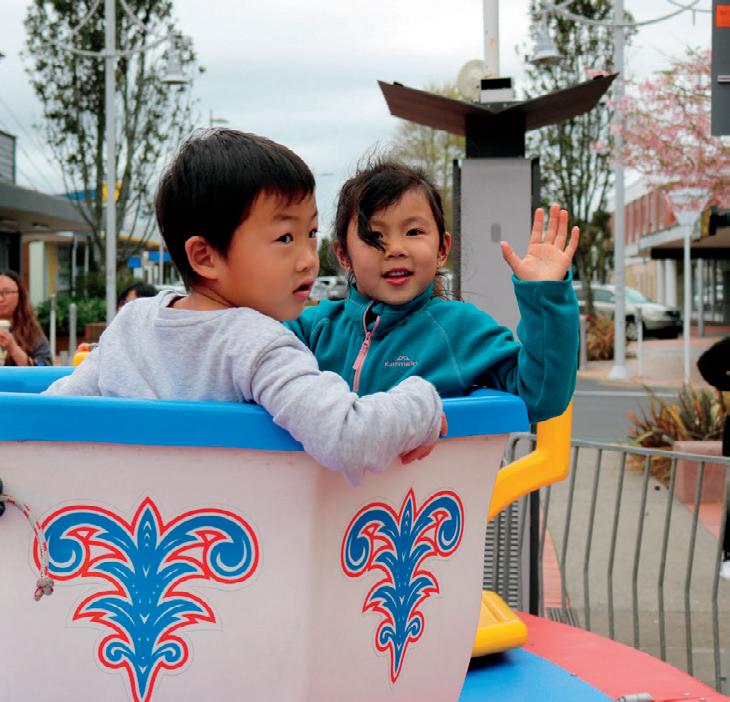































Even Barbie needs her beauty ‘go-tos’ to achieve her famous, flawless complexion. As the new Barbie movie hits screens, here are some real-world beauty buys sure to appeal to this ‘living’ doll.

Doll yourself up with Wet n Wild’s Mega Volume waterproof mascara (RRP $7.70). Add drama by volumising mascara that intensifies and thickens appearance without weighing down the lashes. It’s smudge resistant, sweat proof and humidity resistant, just how Barbie would like it. It’s also safe for contact lens wearers and tested by ophthalmologists.





Barbie probably doesn’t wash many dishes, but if she did she’d need to give her lands a little extra TLC. Weleda Sensitive Hand Cream quickly absorbs and is formulated to soothe sensitive and irritation prone skin. Rich with skin loving organic coconut and jojoba oil, this blend is designed to leave skin and nails soft and supple. RRP $19.90.




Technically, Barbie is now aged 64, so she needs a dose of collagen to keep her looking forever 19. Made from hydrolysed marine collagen, Dr LeWinn’s Marine Collagen Peptide+ Inner Beauty Powder can help increase skin hydration, firmness and smoothness, while strengthening hair and nails. RRP $59.99.



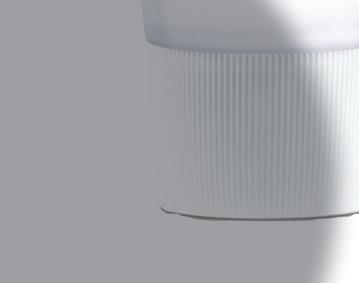






Because busy dolls always need a bit of extra TLC, Sugarbaby’s Say Hello to Glow detoxifying mask is just the thing! This wash-o mask contains mineral rich Australian pink desert clay, collagen pumping shiitake mushroom and witch hazel, intended to leave the skin invigorated, brighter and polished. Sugarbaby Say Hello to Glow is available in 75 gram tubes, RRP $32.99.
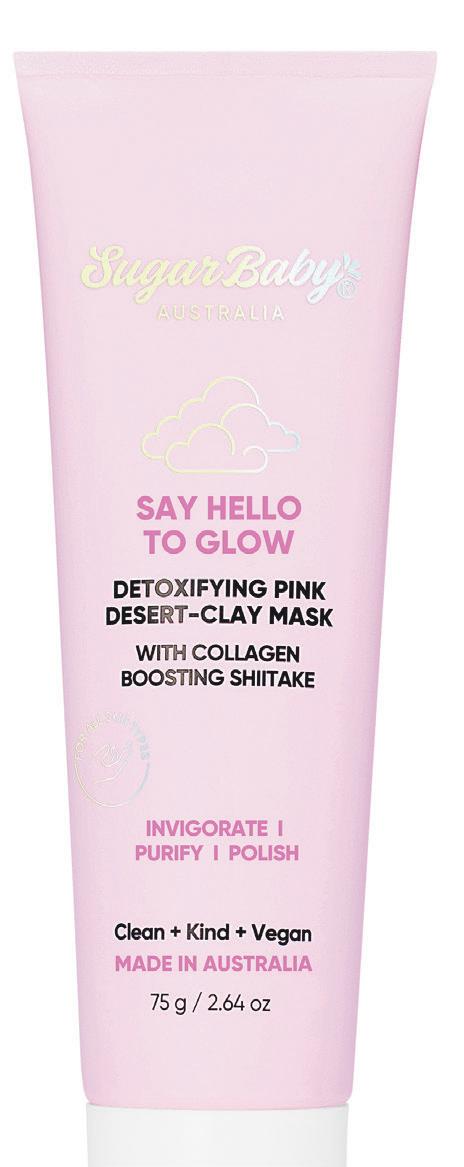
Ahealthy dose of funding should ensure country people need not take their ailments to town. Recently, Te Whatu Ora (Health NZ) unlocked relocation funding to encourage international GPs to work in rural primary care practices.




“This is very welcome news for all rural general practices,” Dr Grant Davidson from Hauora Taiwhenua (Rural Health NZ) says. “Being able to attract and recruit international GPs in a competitive market has long been a challenge for underresourced practices.”



Bolstering health services in towns servicing rural regions should

lessen the pressure on larger, urban health centres and address competition for doctors abroad.




“This funding initiative [bonds] internationally recruited GPs, [it] is a real and tangible boost to the sector. Heavily incentivised recruitment campaigns in other countries, in particular our closest neighbour Australia, have been a concern to us over many months,” Dr Davidson adds. “In discussions with Te Whatu Ora, we have strongly encouraged the establishment of such an initiative for rural general practices. We know that our rural practices, many of which are reaching burnout, will be most thankful.”

































Pets can face stressful situations beyond their control, such as loud parties, long trips, and fireworks Pet Calm offers a natural solution with non-narcotic herbs to soothe pets Try it for a calm and relaxed pet or simply for when a good night's sleep is needed As used by kennel proprietors nationwide

Suppor t your pet s health and well-being, naturally.
2mm



14.5mm
Size of the smallest cancer found by regular mammogram

Average size of cancer found by regular mammogram
22mm
Average size of cancer found by chance
Complete radiology services
Detecting breast cancer early at its smallest size can lead to a higher survival rate.







At Mercy Radiology we use the most advanced 3D Mammography screening and diagnostics to detect small cancers long before a lump is felt. Make time for your health. Don’t delay.
Book today: radiology.co.nz
We see you clearly
E mārama ana mātou i a koe

serving the Franklin region at: 12 Glasgow Road Pukekohe
• X-ray • Ultrasound
• Mammogram

• MRI • CT

Where were you during Iron Awareness Week?
A Papakura-born Black Fern, Stacey Waaka, and a champion shearer, Sacha Bond, were testing their ‘metal’ with gruelling feats at Massey University, Auckland.

“Both women performed extremely well,” the university’s Dr Claire Badenhorst says.
“The tests highlighted why they



are such excellent performers in their chosen fields.”
Arranged by Beef + Lamb NZ to mark World Iron Awareness Week, the physical challenges were undertaken in e ort to highlight the importance of maintaining ‘strong’ iron levels as part of a healthy diet.
“Iron plays a crucial role in achieving peak performance, whether it be for sport, work or just for maintaining a


busy lifestyle,” Dr Badenhorst explains. “[Iron deficiency] can leave us feeling fatigued, making both work and exercise a real challenge. With stats from the last National Nutrition Survey indicating that 12 per cent of women (aged 30-51 years) are low in iron, this is an area I’m passionate about.”

Footage of these sporting stars being put through their paces is accessible via www.youtube.com/@BeefandLamb.

It’s boutique and beautiful! Visit for lunch, dinner or 9 holes of golf. Our unique clubhouse is warm and welcoming – we love to have visitors. Set amongst the Bombay Hills, and now in its 22rd year, Kaye Maxwell started with a few golf holes in the paddock and half her house as the clubhouse. Now a popular function centre, café & bar, with on-site accommodation, Maxwell’s retains the heart and soul of Kaye’s original vision – a place where people feel they belong with fresh country-style food, home baking and good co ee. See website for menu.



As we hit those dusty trails and fly o on fair-weather getaways, we need not leave our faithful companions at home. However, when travelling with pets, good health is essential.
A quick trip to the vet is recommended as an important first step as they will advise whether our fury friends are up to the challenge or would be better o staying home. Whether travelling overseas or closer to home, they will also need to be fully vaccinated to protect them against diseases they may encounter.
During road trips, remember pets will need ready access to food, water and exercise along the way. Also, keep a close eye on them to make sure they’re not distressed. If they are not already well accustomed to rides in the car, taking a few short test runs is advised.




More information about flying with pets (domestically or internationally) is accessible via www.airnewzealand.co.nz.



























To navigate through more great adventures, thanks to Lonely Planet, all we need to do is go... buy the book!
You Only Live Once | RRP $44.99 | Lonely Planet








Whatever spins our wheels when it comes to getting away from it all, Lonely Planet has been there and done that. By charting paths less travelled, as well as major travel routes, their team has released yet another book, titled You Only Live Once, proving that life is what we make of it.
Up near the Arctic Circle, where huskies pant in the cold and the Northern Lights dance like psychedelic flames against inky-dark skies, there is a type of skinny dipping favoured by hardy Finns: talviuinti (ice-swimming). Lakes are frozen October to May, so locals carve out an aavanto (ice-hole) for the perfect post-sauna coolo . At a bits-shrivelling -20°C/-4°F, even the quickest of sploshes sees skinny dippers reappear alive and bright-eyed.

Volcanic-spring (onsen) bathing is among the most popular of Japan’s ancient traditions -particularly with city dwellers, who repair to locations around the country for a revivifying dip, in the nude. Among the most picturesque are the springs of Kurokawa in the Kyushu prefecture, with over 30 baths: purchase a wooden tegata pass for access to three di erent onsen. Alcohol and tattoos (unless very small or covered in bandages) are verboten.
Damaraland is one of the country’s last ‘uno cial’ wildlife regions, and one of the only remaining refuges of the black rhino. Few people live in this ancient landscape and as it’s harder to see megafauna, safari parties head elsewhere. There’s even a petrified forest and fine prehistoric rock art nearby. You’ll likely have the place to yourself – just you and a family of elephants sucking up acacia pods like giant vacuum cleaners.
Covering 655,000 sq km(25,2897 sq miles) of Saudi Arabia, Oman, the UAE and Yemen, Rub al-Khali spans a fifth of the Arabian Peninsula. Long chains of sculpted dunes reach up to 250m (82ft) high in this ‘abode of silence’, where cloaks of early morning fog further deaden any sounds. The Bedouin simply call it ‘the sands’. You can explore the desert with a 4WD, but be sure to bring all provisions with you







From tempting tipples to tasty treats, life can be ‘fare’ enough, thanks to these new (and recent) additions to shelves.








Māori Language Week may be over, but Te Reo continues to experience a resurgence. For this reason, Whittaker’s has been communicating with consumers through the language of chocolate. Only available while stocks last, Whittaker’s classic Miraka Kirīmi (Creamy Milk) chocolate has proven quite the talking point – in this case, it is perfectly acceptable to speak with our mouths full!















While the character of a perfect pizza depends on its topping, Farrah’s has its eyes on the pies ensuring their foundations are on point. Available in Original (RRP $6.50) and Keto ($7) varieties, these ultra-thin and crispy bases are yeast and dairy-free as well as vegan-friendly so they can be enjoyed by the entire family. See page 36 for tempting pizza recipes thanks to Farrah’s.




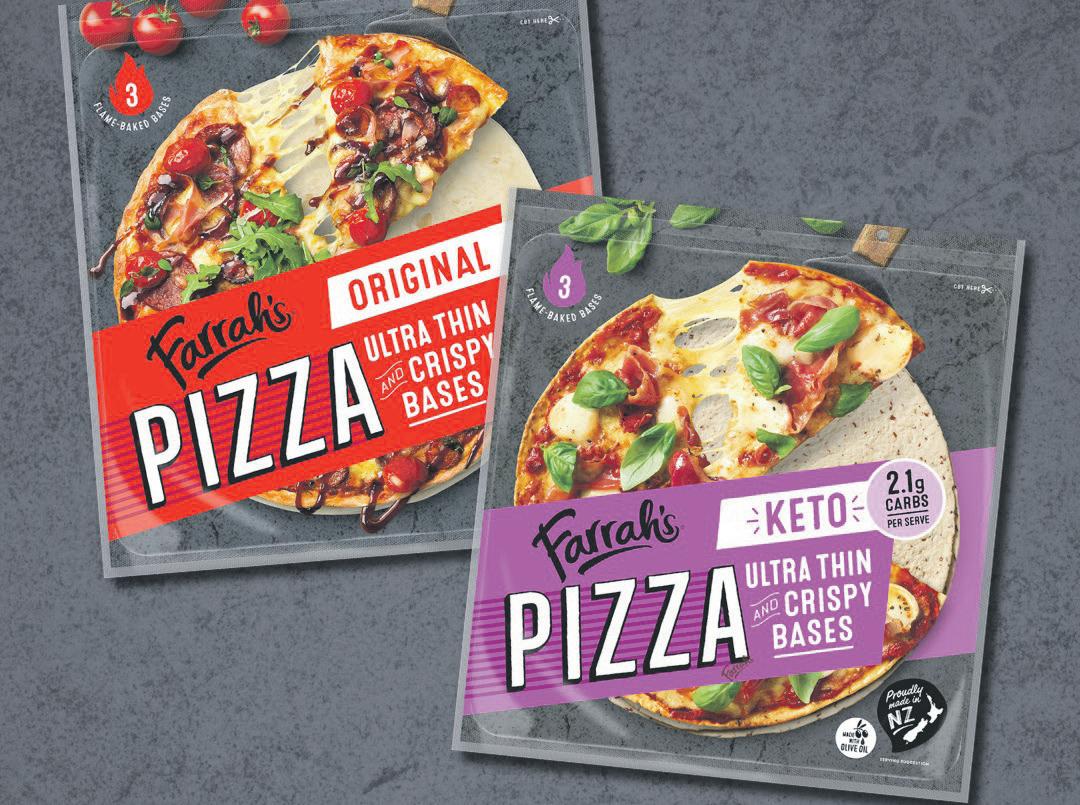
The Herald Angels may sing of more glorious things, but Angel









Crafting sumptuous cuisine takes time and talent. However, all it can take is one good turn. From the kitchens of Palestine to Auckland’s Gusstop Café, Gus Obied has now taken another step by sharing his family recipe for Shakshuka – a Middle Eastern favourite featuring eggs poached in a flavoursome tomato-based sauce. A meal in a jar, Gusstop Shakshuka is available (RRP $15.90) from select food outlets.

Food is rightfully quite proud of another new creation. Creamy, crumbly and moreish, the brand’s new Dairy-free Feta boasts a flavour similar in all the right ways to traditional feta without including a drop of sheep’s milk.

This vegan-friendly alternative is a cheese that’s bound to please.

For more about Farrah’s new pizza bases (on which these heavenly slices are built) see page 35.


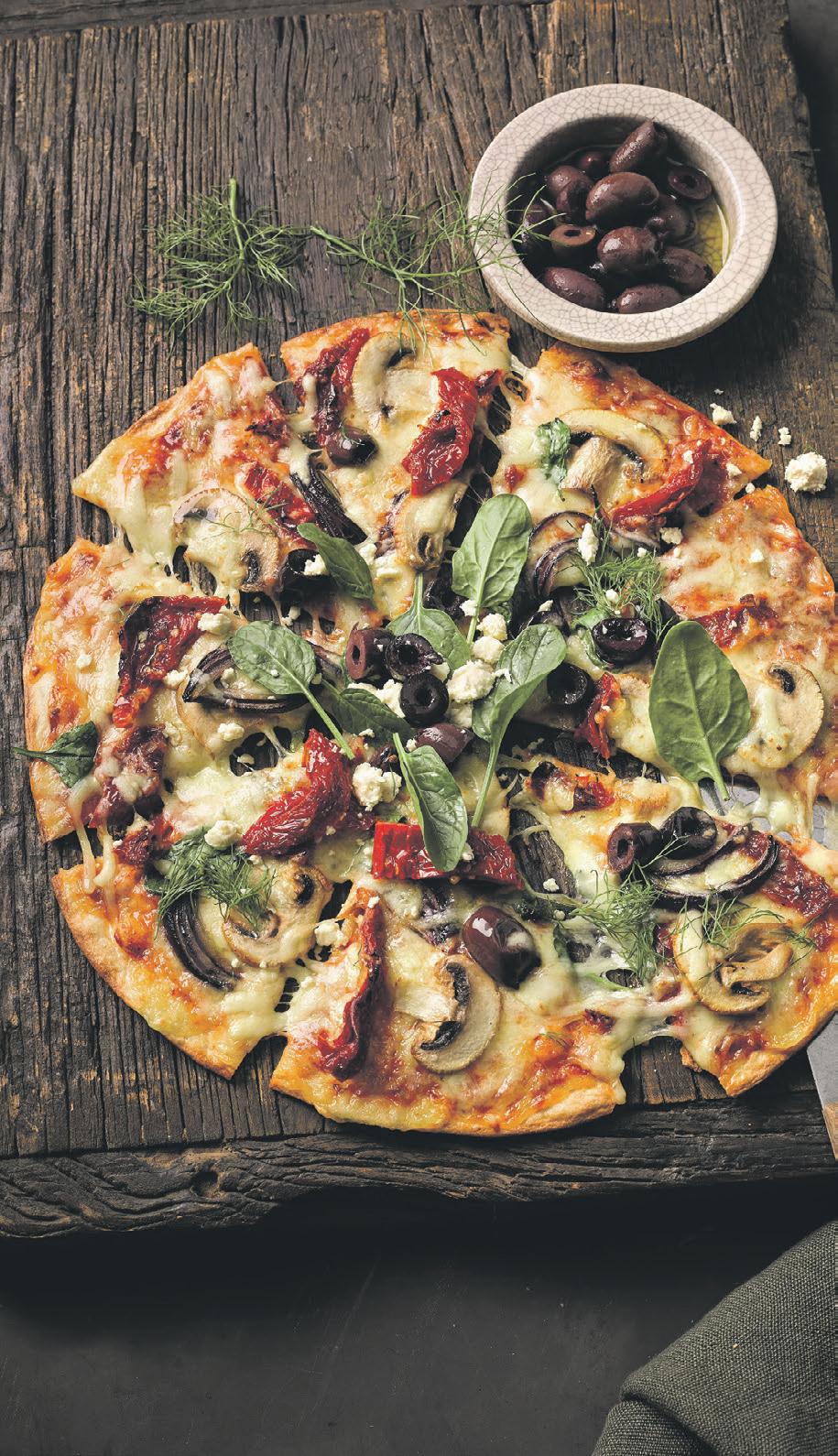
1 Farrah’s Original or Keto Pizza Base
Tomato pizza sauce
3/4 cup mozzarella cheese, grated
Mushrooms, sliced
Cherry tomatoes,
halved


Red onion, thinly sliced
Capsicum, thinly sliced
Feta, crumbled
Pesto
Fresh basil leaves
Salt & pepper
Preheat oven to 200-220 degrees Celsius. Place pizza base on a lined baking tray and cover with a thin layer of sauce. Top pizza base with vegetables followed by the mozzarella and a sprinkle of crumbled feta. Add salt and pepper to taste.
Bake for 8-12 minutes, or until cheese is bubbly and golden. Garnish with fresh basil leaves.
1 Farrah’s Original or Keto Pizza Base
Tomato pizza sauce
Roast chicken, shredded
3/4 cup mozzarella cheese, grated
Spring onion, thinly sliced
Cream cheese
Apricot sauce
Rosemary
Pine nuts
Preheat oven to 200-220 degrees Celsius. Place pizza base on a lined baking tray and cover with a thin layer of pizza sauce. Top base with roast chicken, spring onion, and mozzarella. Evenly dot one-centimetre chunks of cream cheese over the pizza.
Bake for 8-12 minutes or until cheese is bubbly and golden. Add a swirl of apricot sauce and garnish with fresh rosemary and pine nuts.
They may seem like odd bedfellows, but avocados and bananas can combine to prove a perfect pair, as this pair of recipes (ironically not including a single pear!) reveals. For more banana recipes see www.chiquita.com.
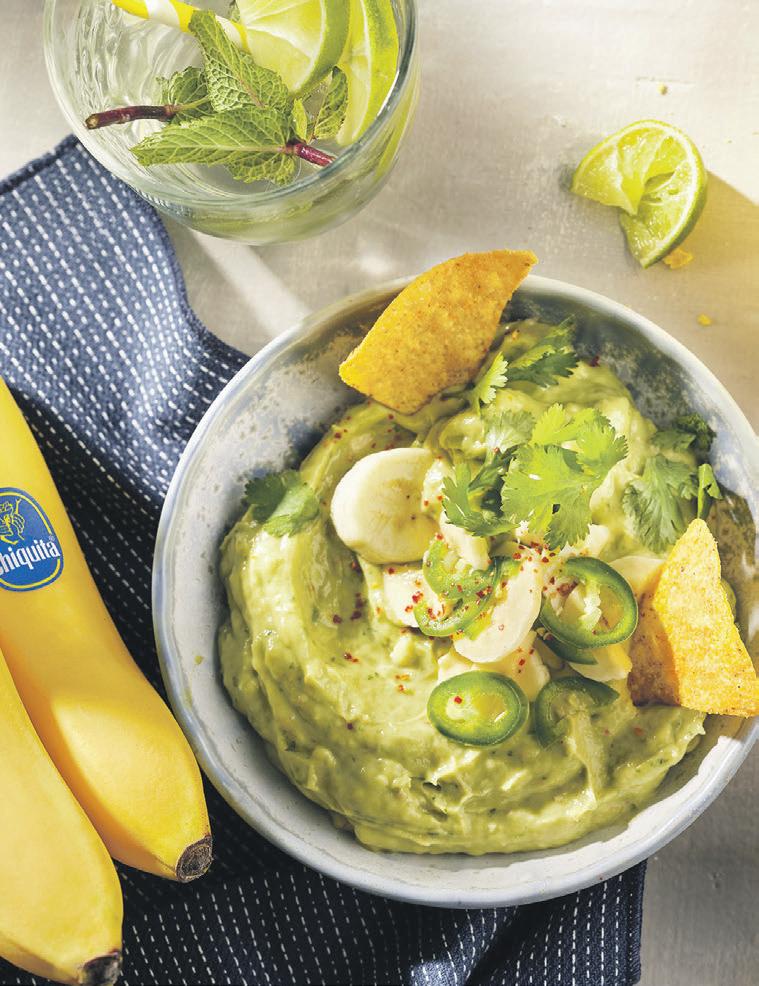
1 avocado
2 bananas
1 lime
1 clove garlic

6 springs coriander
1 jalapeno pepper
1 pinch dried red pepper
Salt & pepper
Tortilla chips
Using a fork or blender, mash the avocado flesh together with one and a half bananas and juice of the lime. Finely chop the coriander, garlic and a piece of jalapeno pepper. Stir into the mixture and season with salt and pepper to taste.
Garnish with the remaining banana (sliced), jalapeno pepper slices, coriander and dried red pepper. Serve with tortilla chips and enjoy!
2 slices of bread
1 medium avocado
1 lemon

1 banana
1/2 cup of pecans
2 tbsp maple syrup (or honey)
Salt & pepper
Mash the avocado before spreading it over the toast. Drizzle with lemon juice and sprinkle lightly with salt and pepper to taste.
Peel and slice the banana. Fry briefly with a teaspoon of maple syrup until the banana is lightly caramelised. Spread banana over the avocado. Sprinkle with extra maple syrup and coarsely chopped pecan nuts.






With so much majestic countryside around us, New Zealand has become a nation of trampers. As we head into spring, the ranks of intrepid adventurers will swell but, as Shaun Barnett contends, the first step is to always be prepared. The latest guide from a veteran tramper features 45 of our country’s best-known great walks, including the Milford Track, Routeburn and Tongariro North Circuit, as well as lesser-known gems such as Coromandel’s Kauearanga Kauri Trail and the Old Ghost Road.
Shaun Barnett: Tramping in Aotearoa –New Zealand’s top 45 tracks | RRP $49.99 | Potton & Burton



Creepy, crawly, slimy and stinky, certain critters may not be quite so endearing as other native wildlife. And yet, as this book (based on a popular podcast) reveals, all such creatures –be they gravel maggot or drooping blobfish – are interesting in their own, unique way, especially to young Kiwis aged eight and up.
Nicola Toki: Critters of Aotearoa – 50 Bizarre but Lovable Members of Our Wildlife Community | RRP $30 | Pu n
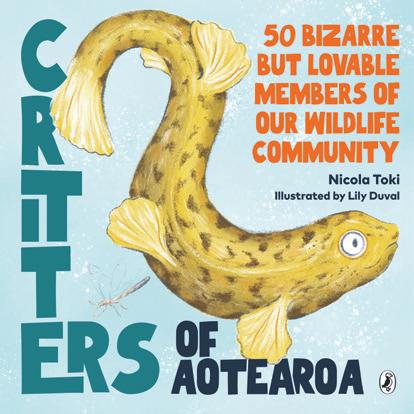
Under pressure to abandon the family farm, Imogen Maguire’s grandfather needs all the help that can be mustered as this gripping narative unfolds. A novel about generations of a family spanning three centuries (1864 through until 2018), this book draws on historical fact to tell an engaging tale illustrating the impact of colonisation and war on a Kiwi community. What secrets hide between the pages of this book? There’s only one way to find out!
Kate Mahony: Secrets of the Land | RRP $29.99 | Cloud Ink Press


From her rural roots to a highly successful career as an author, Jennifer Beck’s memoir digs deep to reveal a fascinating life. A teacher and psychologist, Jennifer has won numerous awards over a lengthy career as well as an ONZM, setting her among the top tier of New Zealand’s children’s book authors. She has also featured (not quite on the same level here!) in Rural Living – see our Jul-Aug 2015 e-edition at ruralliving.co.nz.
Jennifer Beck: Bits of String Too Short to Use | RRP $40 | Mary Egan Publishing

























An acclaimed Kiwi author has cooked up another classic children’s book. In this fun, hands-on guide, Mrs Quokka and her son Jase the Quokka (from Karen’s successful Elastic Island series) present baking recipes designed specifically for some of the littlest cooks in our kitchens along with a side of quirky quokka logic.
Karen McMillan: The Quokka Logic and Baking Book | RRP $29.99 | Duckling Publishing

To little ones, the world becomes a very di erent place, even in familiar surroundings, when the lights are out – for one thing, the cover of this de-lightful book actually glows in the dark! Facing her fears, Lucy embarks on a wild adventure making friends with ‘the Dark’ as this funny story (ideal for readers aged 0-5 years) shines a light on a common cause of anxiety.
Melinda Szymanik & Vasanti Unka (illustrator): Lucy and the Dark | RRP $21 | Picture Pu n


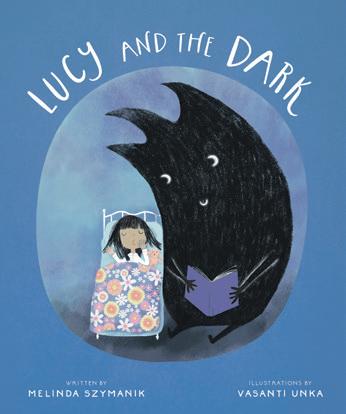
 By Marissa Chapman, Grahams Funeral Services
By Marissa Chapman, Grahams Funeral Services



Funeral rituals and rites can be traced to the dawn of mankind and have continued throughout our history. Although many traditions have been altered over time, the reasoning and purpose of a funeral remains the same.
While funerals are intended to remember the dead and honour their lives, they are equally important to friends and family left behind. The purpose of funerals is to say farewell to lives well lived while emphasising a crucial step in the grief process – they help reinforce the reality of death and initiate healthy grief and mourning.

None of us wants to think about ourselves or our loved ones dying, but death is a natural occurrence. Part of everyday life, no matter how hard we may try to ignore it, death a ects us all.
At Grahams, we know every person and every family we care for is unique, so we strive to ensure the farewell created for them is personal and fitting for all concerned.
Funerals provide opportunities to share and become united in grief. They deliver a way through which we gain support from one another while telling the life story of the person who has passed. There is no right or wrong way to plan a funeral, but a farewell of some sort is important in ensuring we express love, gratitude, heartache and loss while beginning the transition towards a life without our loved ones.
Celebrating, remembering, mourning and farewelling someone you love is the start of a new relationship with them – based on memories rather than having them present in physical form, but one that’s just as important.






Signs heralding recovery of the Auckland housing market are imminent, as evidenced by the higher number of properties sold in August and prices paid for those properties. In fact, August was the most positive sales month in almost a year and a half. Not only did our number of sales increase significantly during the month, but the median sales price (at $982,500) was also up 3.4 per cent when compared to July.
Chris BurgerIn context with where the market has been, August’s results indicated only a modest step forward, but the level of buyer motivation was the best we’ve seen for more than two years.
Local rural and lifestyle markets also experienced stronger buyer activity in August. Following a di cult June-July period, we’ve seen activity in the lifestyle sector reflecting improvements in the residential sector. Sellers are adjusting to the challenges of dealing with interest rate changes as well as cost of living increases.
Encouragingly, there are signs that the volume of sales will continue to grow as property owners bring more properties to the market. Once October’s general election is behind us, I anticipate sales activity for rural and urban properties will increase, underpinning a steady market through until the end of the year at least.
I expect the market’s recovery during the next 6-12 months will be made clear by the number of properties sold rather than major increases in prices paid. However, greater numbers of properties on the market translates to more competition for properties, with well-presented properties continuing to command the most interest among buyers.
People who are considering selling need to take the time to seek expert advice as this will prove critical in achieving optimum sales prices in a competitive market.

Roses, Violets, Lilys, Daisys and perhaps even a Hyacinth or two may have been present when the South Auckland Orchid Society held its annual show in Pukekohe recently. However, Wayne Martin didn’t ask many visitors for their names as orchids were the subject of his attention. To view more of his stunning photos, see www.ruralliving.co.nz.






While prices may have grown at the checkout, more Kiwis are checking out the benefits of growing fresh fruit and vegetables at home, Fiona Arthur from Yates asserts.
“Growing your own veggies is a never-ending learning process and so much fun. There is nothing better than picking you own veggies to pop in the pot – not to mention the massive savings that can be made.”
Intended to help share their love of gardening, Yates’ National Gardening Week (October 16-23) is the ideal time to get on top of our spring planting.
Whether we invest in a few pots on a back deck or dig in deep with a new veggie patch, the right advice is often crucial. Fortunately, comprehensive advice is accessible – with tips suited to green-fingered veterans and novice alike – by searching ‘National Gardening Week’ at www.yates.co.nz.
Little hands make light work of growing glorious summer stunners in the garden. Once again, the Daltons Sunflowers in Kindergartens Project is providing more than 10,000 children with the tools of the trade and prizes are up for grabs.

“Gardening is now an even more valuable, life-long skill, especially with fruit and vegetable prices

skyrocketing,” Colin Parker from Daltons says. “Our project aims to develop these skills in children [and] also bring a sense of happiness and joy to everyone who takes part.”
Children involved in the contest (on now until December 11) will nurture skyscraper sunflowers, using seeds provided by Daltons’ project partner, Kings Seeds.



Take a small pot, such as a yoghurt container, add holes in the bottom for drainage and fill it almost to the top with Daltons Premium Seed Mix or similar. Sow seeds into the soil at a depth of (approximately) 1-1.5cm, but no more than twice the diameter of the seed as seeds sown too deeply will not germinate. Add a little more soil on top of the seeds and water lightly.
Place pots into an ice cream
container and place on a sunny windowsill indoors. Try to ensure the temperature is as even as possible for optimum germination. Water regularly for even germination and growth, but don’t overwater as this may rot the seeds. When seedlings sprout, their first leaves will look almost like a four leaf clover. A few days later, a third single leaf, called the first ‘true leaf’ will emerge. Seedlings will be
More tips, and information about Sunflowers in Kindergartens, is accessible via www.daltons.co.nz.






ready to plant outdoors (weather dependent) once they sprout their second set of true leaves, when they are (roughly) 10-15cm tall.
Seedlings should be planted in a spot where they receive full sun throughout the day while being sheltered from the wind. Gently tie the plants to tall stakes with soft ties (such as recycled pantyhose) for extra support but not so close as to disturb their roots as they grows.

Landmark Homes Auckland – South & Franklin are thrilled to have been recognised at the recent House of the Year Awards held in Auckland recently.




Designed with the future in mind, these sophisticated and stylish duplex apartments are situated in the thriving community of Paerata Rise. Conveniently close to Auckland city, yet with the charm of a relaxed country village, Paerata Rise is the ideal location for those seeking a welcoming community atmosphere.
With the latest in smart home technology being showcased and new products on display be sure to attend the opening weekend of our new Showhome.
Address | 11 Heaphy Lane Paerata Rise

Opening weekend | 23rd / 24th September – 11.00am - 3.00pm
Ongoing hours | Wednesday to Sunday - 11.00am - 3.00pm


Landmark Homes AucklandSouth & Franklin
T 09 294 6411 | M 027 208 4004


E franklin@landmarkhomes.co.nz
W landmarkhomes.co.nz


Capital e orts and Precision performances in constructing Landmark homes were in Frame at the northern regional House of the Year Awards. Three companies secured category wins for homes in Paerata Rise: Landmark Homes (Multi Unit), Capital Homes (New Home $500,000-$750,000) and Precision Homes (Show Home). In addition, a Pukekohe project saw Frame Homes top the Up to $500,000 class.
Although Kane Build Group, Maddren Homes and Faulkner Construction claimed the top tier (supreme awards) for their e orts beyond Franklin, local homes also shone with regards to gold, silver and bronze awards.










A complete list of this year’s winning e orts is accessible via www.houseoftheyear.co.nz.



Hackneyed as it sounds, home really is where the heart is. To raise funds into heart health research, Jennian Homes is giving away a new home in Glenbrook through the Heart Foundation’s latest lottery.






Although Jennian has partnered with the foundation since 2008, handing over the keys for more than 85 homes to winners, their latest home is quite the first prize. Featuring four double bedrooms and two and a half bathrooms, it also boasts a spacious kitchen, dining and living area.

Topping the prize list (which also includes international travel, a car, cash and more), Jennian’s lottery home is open to the public until October 5. For more details or to purchase tickets see www.heartfoundation.org.nz.

North to South, we have diffferent skills, and collecctively we know this country better than anyone The price of a paddock or the worth of a villa, we know the buyers of New Zealand, and everywhere you find us, you'll find our experts and high achievvers So contact your local Bayleys office for an altogether better experience




HANDS-SOME FACES: Despite losing an hour as we ‘spring forward’ (daylight saving begins on September 24), we can always gain the gift of a little more time at home thanks to Thomas James.

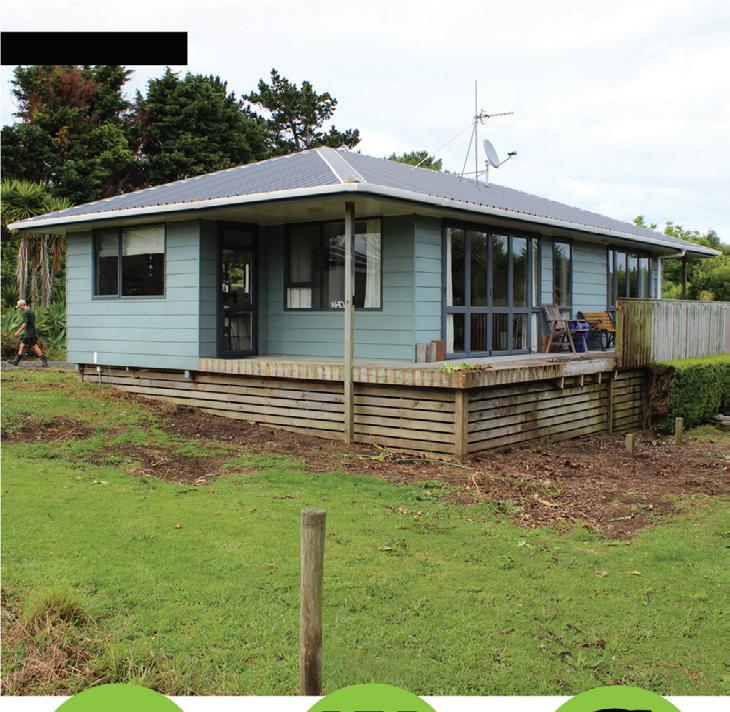
Due to the development of smart devices, timepieces may not be as essential as they once were. However, sleek, stylish and sophisticated clocks have withstood the test of time by retaining their place with regards to elegant interior design.
Elegant and intricate, functional and fashionable, Thomas James’ clocks are fast becoming popular inclusions in homes throughout Europe and beyond.


However, it takes time to make time –these premium products, ‘hands-crafted’ by leading clock and watchmakers from throughout the UK, are made-to-order, limited-edition pieces.
Thomas James’ sophisticated designer clocks can be viewed and ordered online via www.thomasjamesclocks.com.
















Selling a home can be a complex and emotional process, and one of the most critical aspects is determining the right price for your property. The pricing strategy you adopt can greatly influence the success of your sale, impacting the time it takes to sell your home and the final sale price. Let’s have a look at some of the pricing strategies to help you make an informed decision and maximise your chances of a successful sale.
Researching the local real estate market is essential before setting a price for your home. Conduct thorough research on the current state of the market, looking into recent sales of similar properties in your area. Consider factors such as location, size, condition, and amenities when comparing homes. This research will provide valuable insights into the prevailing market trends and help you understand what buyers are willing to pay for homes like yours.
Using an experienced real estate agent is highly recommended when selling your home and Jo-Ann and Victoria can work with you to provide a comparative market analysis (CMA), a detailed report on recent sales and listings in your area. Based on this information, they can advise you on an optimal price range that aligns with market conditions and your specific home’s attributes.
One common mistake homeowners make is overpricing their property. While it might be tempting to set a high price with the hope of negotiating down, overpricing can deter potential buyers and lead to your property lingering on the market. Prolonged market exposure may convey a sense that there’s something wrong with the property. Accurately pricing your home from the outset is crucial to attracting interested buyers.
While online valuation tools











































can provide a rough estimate, use them in conjunction with other data sources to get a clearer idea of the value of your property. Because these tools don’t consider the unique features and conditions of your property, relying solely on an online valuation can lead to mispricing your home.




The condition of your home significantly a ects its value. If your property requires repairs, or updates, or has noticeable cosmetic flaws, it may be necessary to adjust the price accordingly. Be realistic about your home’s condition and take into account potential repair costs when setting the price.


The real estate market is dynamic, and factors influencing it can change rapidly. We always recommend staying in touch with your real estate agent and continually assess market activity. If your home has been on the market for an extended period without much interest, it might be time to reevaluate the price or marketing strategy or even the agent you chose.
The real estate market is dynamic, and your pricing strategy should adapt accordingly. If
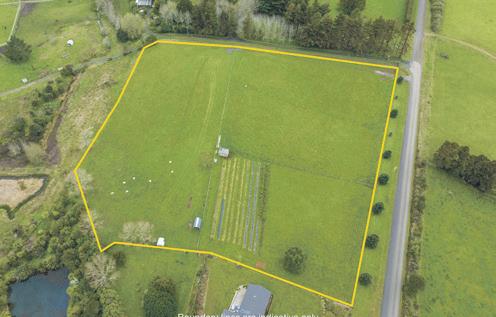





















your home is not generating su icient interest or o ers, be open to reassessing the price. Regularly review market trends and feedback from potential buyers to ensure your pricing remains competitive, and your agent will be able to guide you through this process.
Pricing your home strategically is a critical element of a successful sale. By conducting thorough research, working with your real estate agent, and considering market conditions, you can determine an optimal price that attracts buyers and reflects the true value of your property.
Remember, striking the right balance between an attractive price and realistic value is key to achieving a smooth and successful home selling process and why choosing to work with Jo-Ann and Victoria at Team Town and Country is the right choice.






































